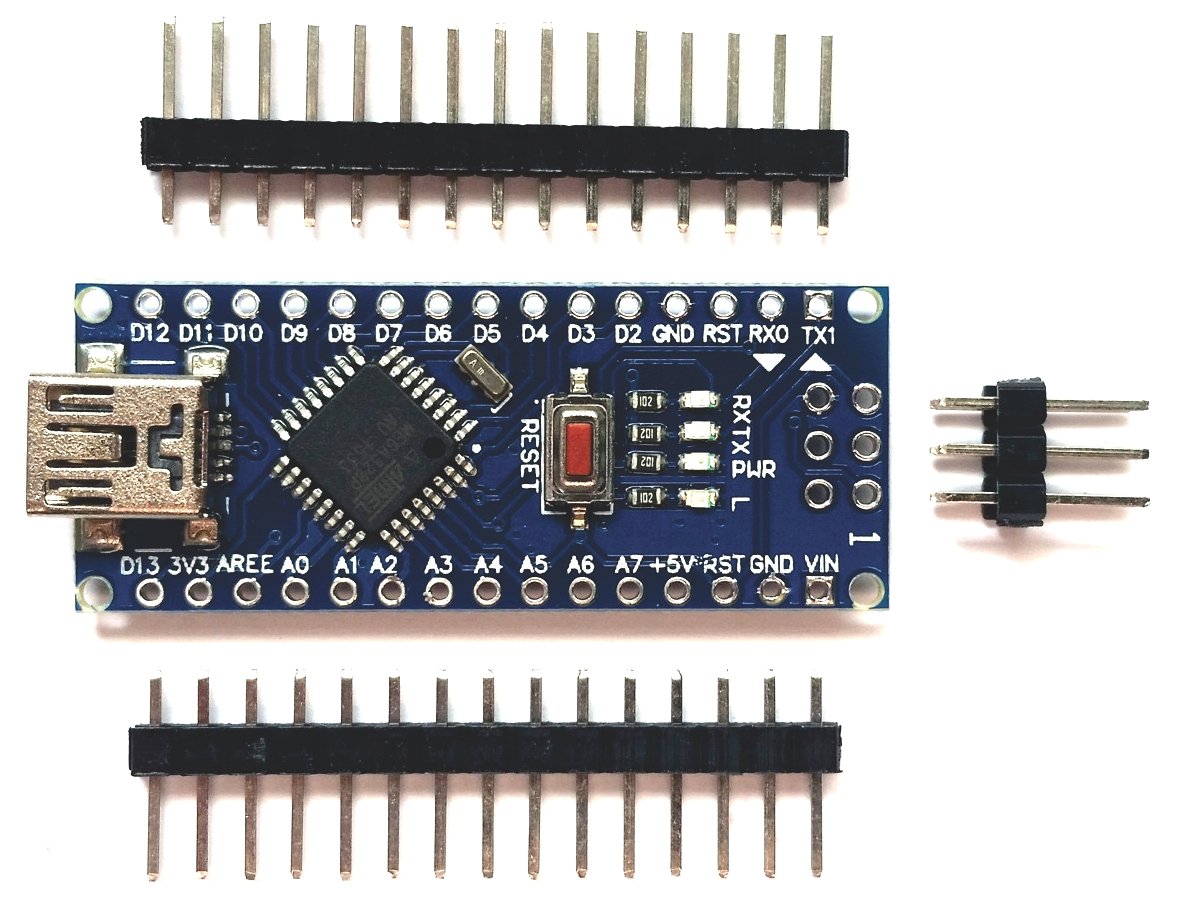
Use this LED to perform Blinky operations. There is an on-board LED connected to digital IO pin 13. Digital IO Pins 10, 11 12 and 13 can be configured as SPI pins SS, MOSI, MISO and SCK respectively. The final communication interface is the SPI. They can be configured as SDA (A4) and SCK (A5) to support I2C or I 2C or Two Wire Interface (TWI) communication.
Arduino nano serial#
These pins are connected to the serial pins of the on-board USB to Serial Converter IC.Īnalog Input Pins A4 and A5 have alternative functions. In fact, the Arduino boards (UNO or Nano or Mega) are programmed using the serial communication.ĭigital IO pins 0 and 1 are used as Serial RX and TX pins to receive and transmit serial data. Perhaps the most common communication interface in the Arduino universe is the Serial Communication. What Communication Interfaces are available on Arduino Nano?Īrduino Nano supports three different types of communication interfaces. You can use analogWrite() function for this. All the analog input pins provide a 10-bit resolution ADC feature, which can be read using analogRead() function.Īn important point about Analog Input pins is that they can be configured as Digital IO pins, if required (all analog pins except A6 and A7 can be configured as digital IO).ĭigital IO pins 3, 5, 6, 9, 10 and 11 are capable of producing 8-bit PWM Signals. This is a couple more than Arduino UNO (which only has 6). There are also 8 Analog Input Pins (A0 to A7). The value of the internal pull-up resistor will be in the range of 20KΩ to 50KΩ. An additional feature of the Digital IO pins is the availability of internal pull-up resistor (which is not connected by default). In that 14 pins (D0 to D13) are true digital IO pins, which can be configured as per you application using pinMode(), digitalWrite() and digitalRead() functions.Īll these Digital IO pins are capable of sourcing or sinking 40mA of current. Of the 30 pins available on the Nano board, 22 pins are associated with input and output. What are the Input and Output Pins of Arduino Nano? 2 KB of the Flash Memory is used by the bootloader code.There are three different memories available in ATmega328P. Strictly speaking, this is specific to the MCU used on the Nano Board, which is ATmega328P. What are Different Memories of Arduino Nano? To use, you can provide an unregulated supply in the range of 6V to 20V to VIN pin of the Nano (Pin number 30). The next way is to provide a regulated 5V supply through the 5V pin (Pin number 27).įinally, the Nano has an onboard regulator at the bottom (along with the USB – to – Serial Converter). The first and easy way is using the mini-B type USB Connector. There are a couple of ways in which you can power the Nano board.

But none the less, let me give you a brief overview about some important specifications of Arduino Nano.

Technical Specifications of Arduino NanoĪs Arduino Nano is also based on ATmega328P Microcontroller, the technical specifications are similar to that of UNO. Regarding the pin, I will discuss about them in the Arduino Nano Pinout Section. Apart from that, the layout of Arduino Nano is very much self-explanatory. Also, there is no 2.1 mm DC jack to provide external power supply. Layout of Arduino Nano BoardĪs you can notice, the Type-B USB connector from Arduino UNO is replaced with mini-B type connector. As you can see from the previous image, there are a couple of components on the bottom side of the board as well (5V Regulator and USB-to-Serial Converter IC are the main ones). The following image shows the layout of a typical Arduino nano board. Personally speaking, I suggest Arduino Nano over UNO as it is cheaper, breadboard friendly, small in size and has couple of more pins (digital and analog IO) than UNO. Overall, the Arduino Nano is a very good alternative to the mighty Arduino UNO and is available at a lower price. The Nano board is designed in such a way that the pins are breadboard friendly so that you can easily mount it on one for your DIY projects. Other than that Nano is very similar to UNO in terms of functionality. If you compare UNO and Nano, then Nano lacks the DC Power Jack and contains a mini-B type USB connector. Front and Back view of Arduino Nano Boardĭespite the size, Arduino Nano packs in more or less the same features as UNO.

Both UNO and Nano are based on ATmega328P Microcontroller but Nano is significantly smaller in size compared to UNO.

What are the Input and Output Pins of Arduino Nano?.What are Different Memories of Arduino Nano?.Technical Specifications of Arduino Nano.


 0 kommentar(er)
0 kommentar(er)
